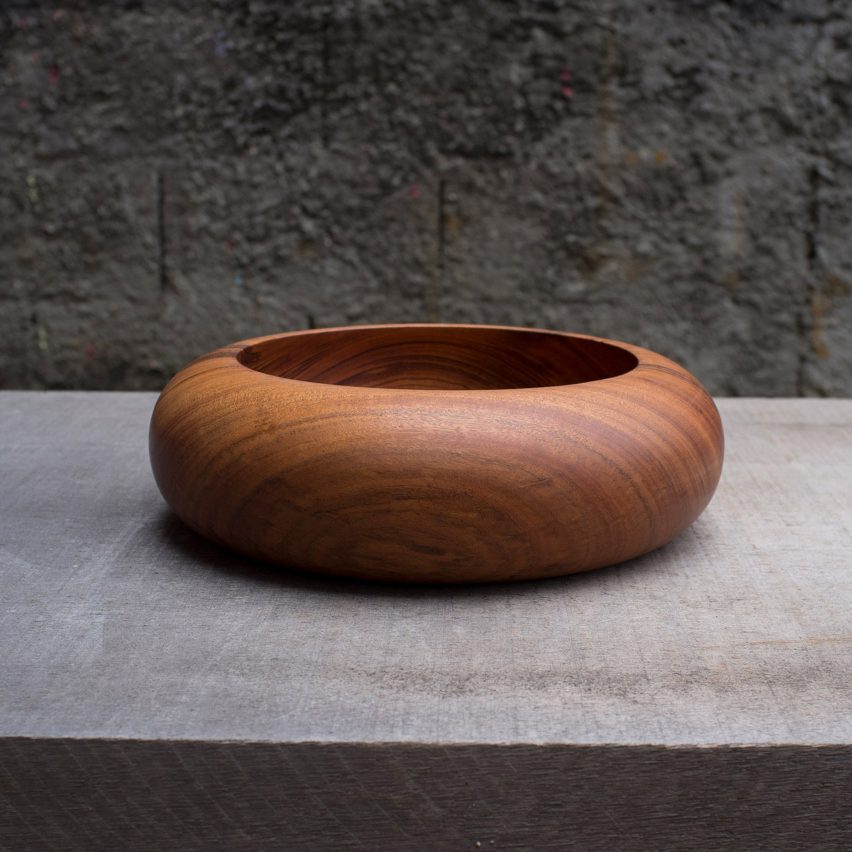
Brazilian designers made this series of homeware and furniture, which was exhibited during São Paulo design week, with Amazon communities that use more sustainable practices to harvest timber from the forest.
The objects including include wooden bowls, chairs and tables are the result of the Design and Sustainable Wood project led by BV Rio Institute, which aims to facilitate more environmentally friendly design mechanisms in Brazil.
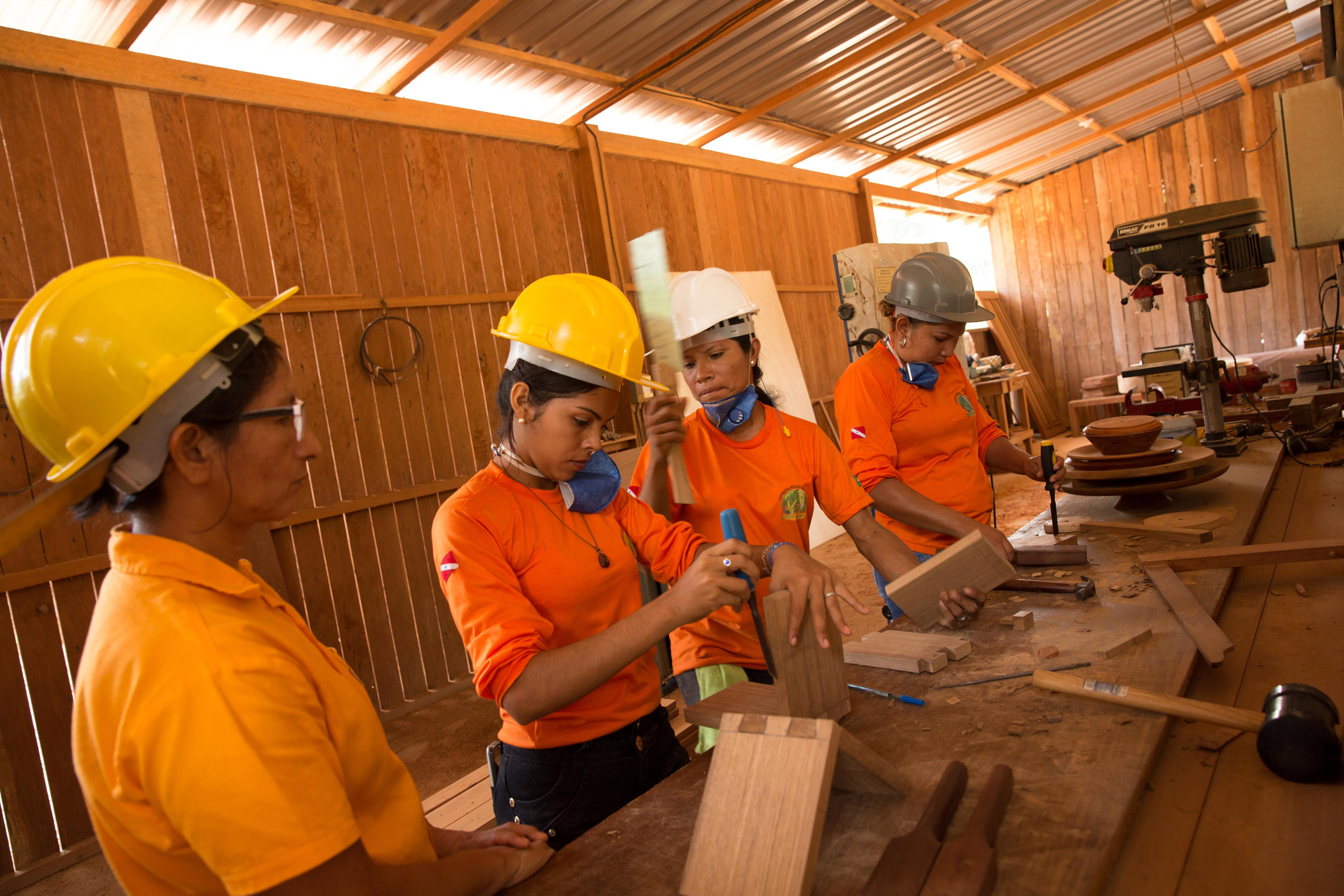
BV Rio teamed up with Coomflona, a co-operative consisting of 23 indigenous communities that have pledged to not use their land for farming or other short-term practices, but rather for more long-lasting enterprises.
A selected set of designers then went to Pará, Brazil, the heart of the Amazon rainforest, to conduct design workshops with the local communities.
"Each designer went to the Amazon all ready with a design to teach the woodworkers how to make the pieces," BV Rio's Cristina Tavares de Bastos told Dezeen.
"During the workshops, the woodworkers would spontaneously teach the designers about the different types of wood and local craft knowledge," she added. "It's really an exchange of knowledge, that started with the workshops of each designer."
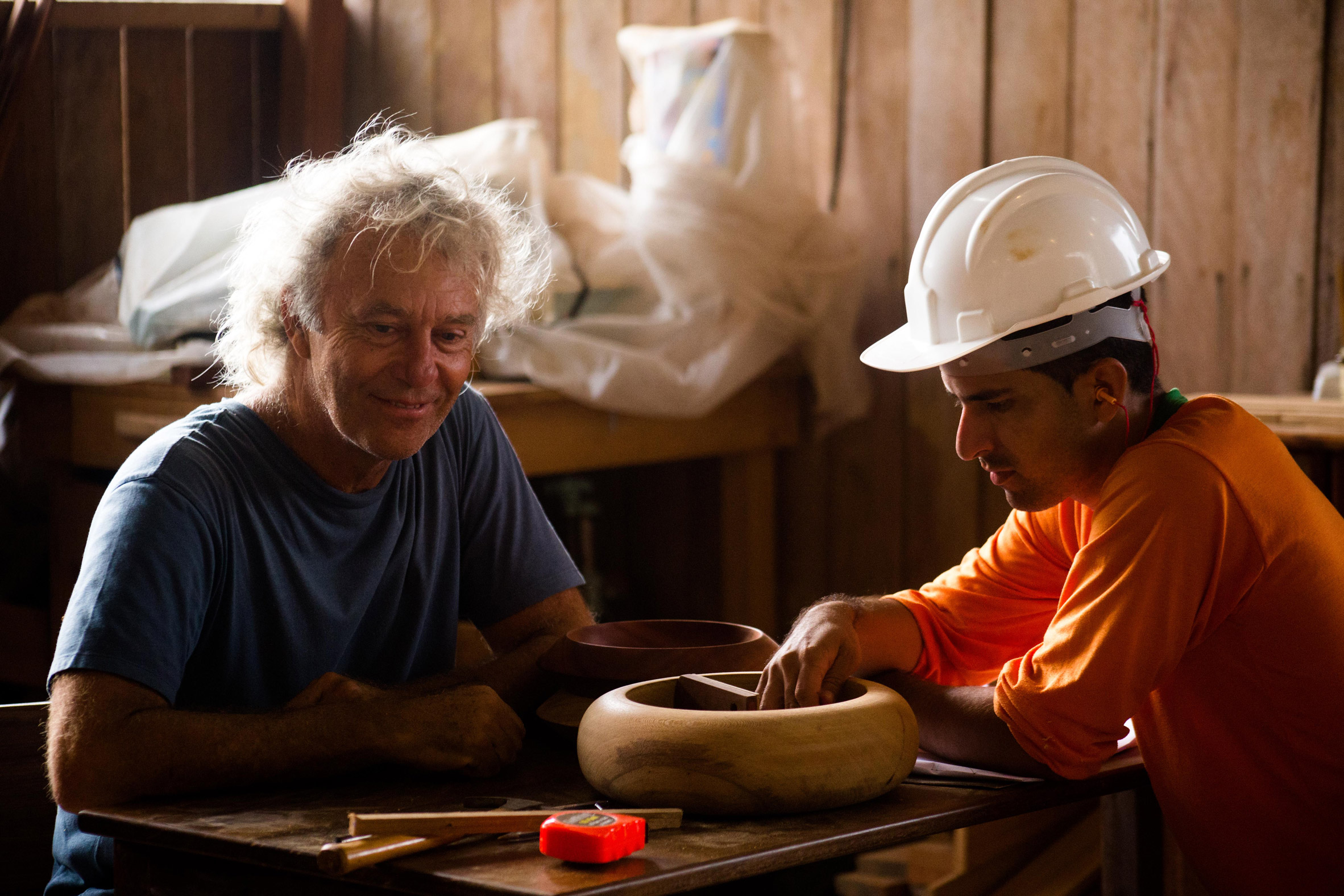
All the items are made from wood certified by the FSC, Forestry Stewardship Council, which earmarks timber that has been harvested sustainably.
"The goal of Design and Sustainable Wood is to foster the use and consumption of FSC-certified native wood, managed sustainably and in the respect of human rights," BV Rio said.
"While the designers personally got to know the cooperative and learned more about responsible forest management and the numerous wood species in the region, the cooperative members participated in workshops led by the designers to improve their furniture and decoration objects production techniques."
Designer Alessandra Delgado worked with local harvesters in Pará to create the Poltrona Tapajós chair. The piece is made with three species of Brazilian wood: muiracatiara, angelim and ipê.
Alternating slabs of the wood types are laid out to form the stripes that make up the armchair.
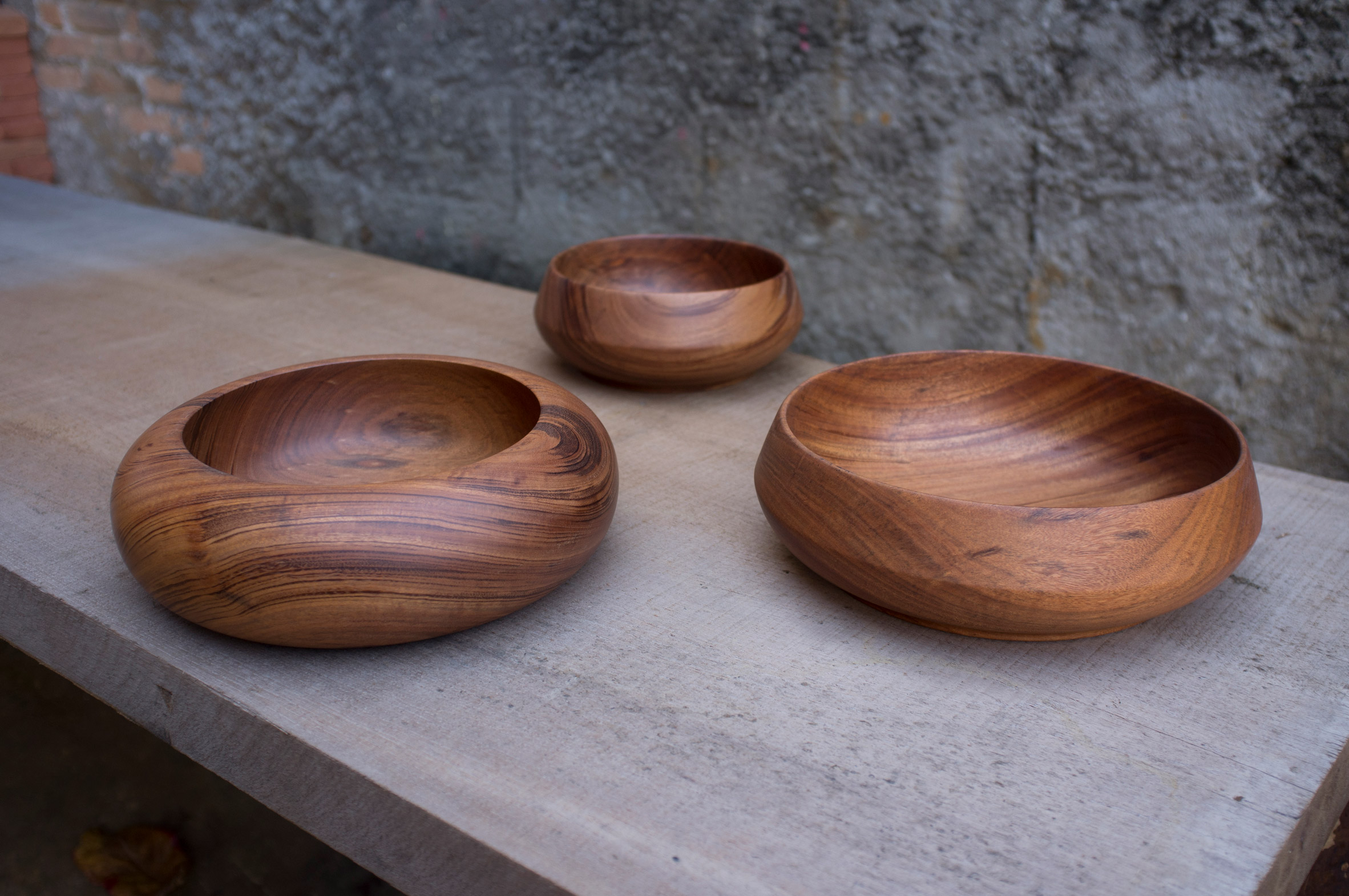
"I created the way to produce the piece together with them, we chose the wood together and that was the most wonderful in this experience," Delgado told Dezeen. "They were very proud at the end to see they are able to work as designers and create, think, and not as only manual workers."
Lacuna by Claudia Moreira Salles, meanwhile, is a square-shaped chair made with ipê wood. Two wooden slats form the seat and its back, which are both capped with round green upholstered cushions.
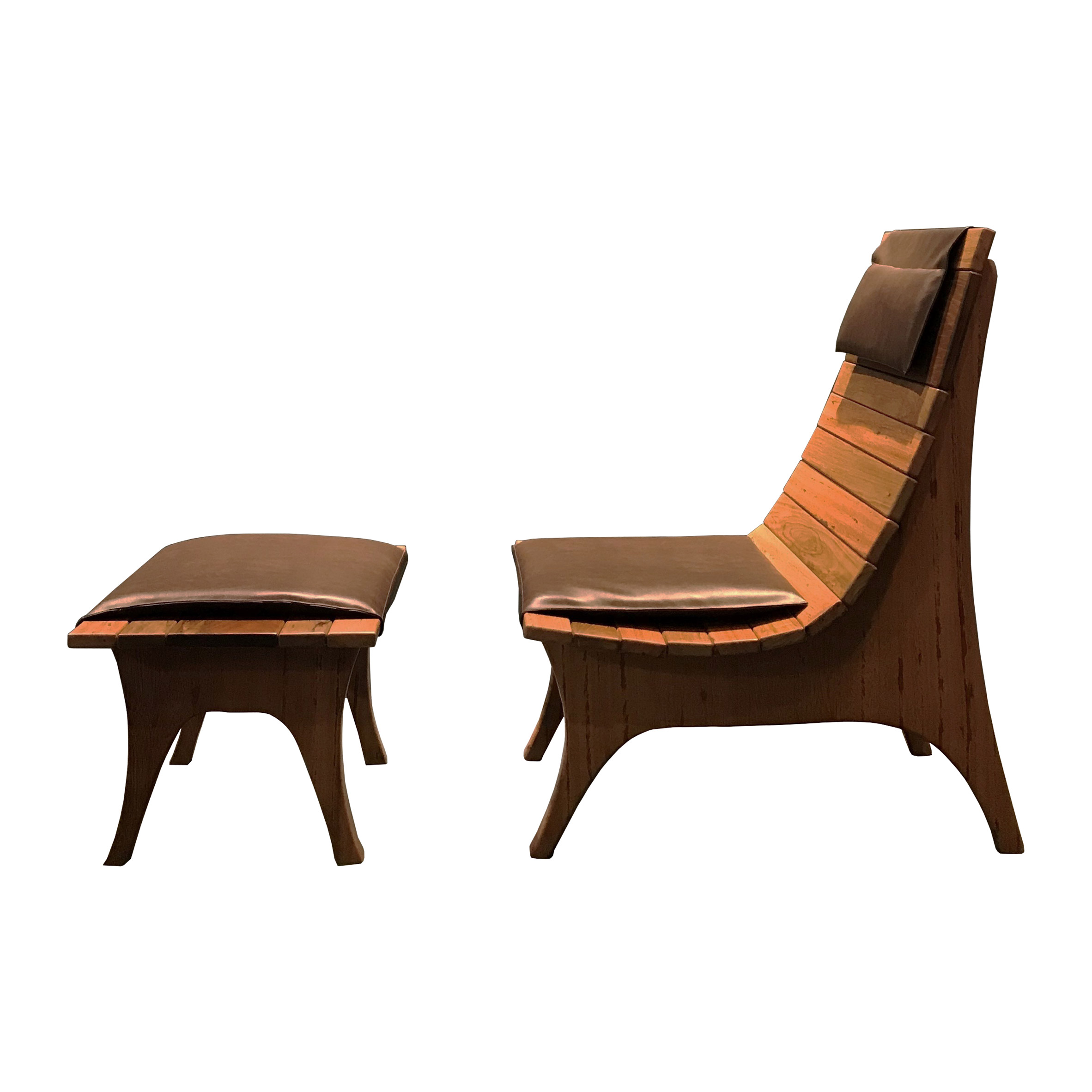
With concerns about the effects of the climate crisis rising, the Design and Sustainable Wood initiative follows a number of projects striving to make designs that are more sustainable and environmentally friendly. Examples include clothing made from algae and furniture made from recycled parachutes.
Sustainability in design, however, has become harder to certify, and often refers to making products that are comparatively better to other practices.
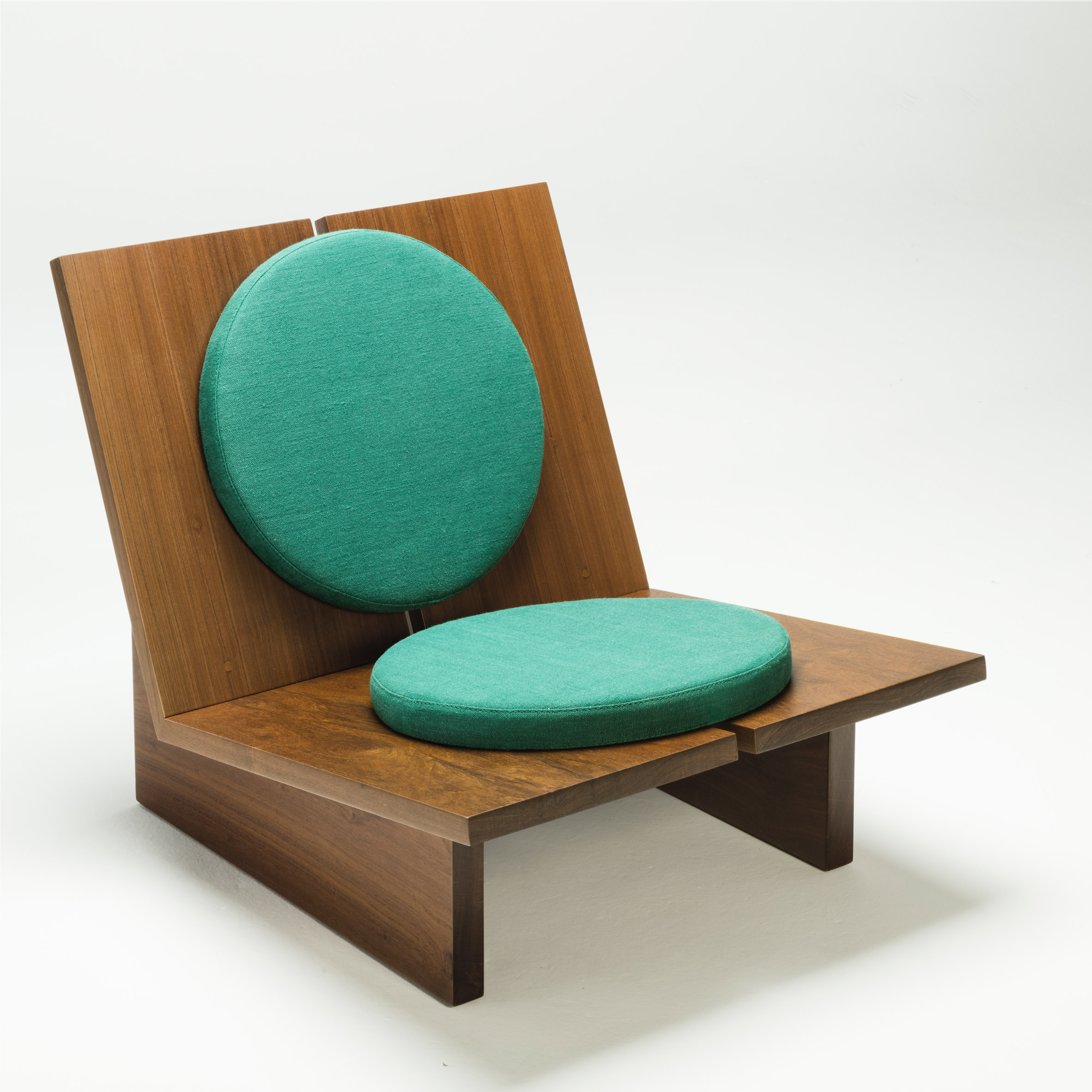
Design and Sustainable Wood, for example, is FSC-certified and actively monitors the forest to ensure its activities don't negatively impact the species that live there.
In order for wood to be FSC-certified it must follow strict protocol set forth by the council, these regulations include defining and documenting rights to the land's use, respecting indigenous people and their land, conserving biological diversity and continual monitoring of the territory and the practices that occur on it.
"The objective of Design and Sustainable Wood is to expand the talents and strengthen the capacities of community groups involved in sustainable forest management, contributing to their insertion in markets with high added value," BV Rio said.
"Obtaining timber from native forest exploitation is only acceptable following techniques and procedures that ensure their sustainability and better livelihoods for local populations," it continued.
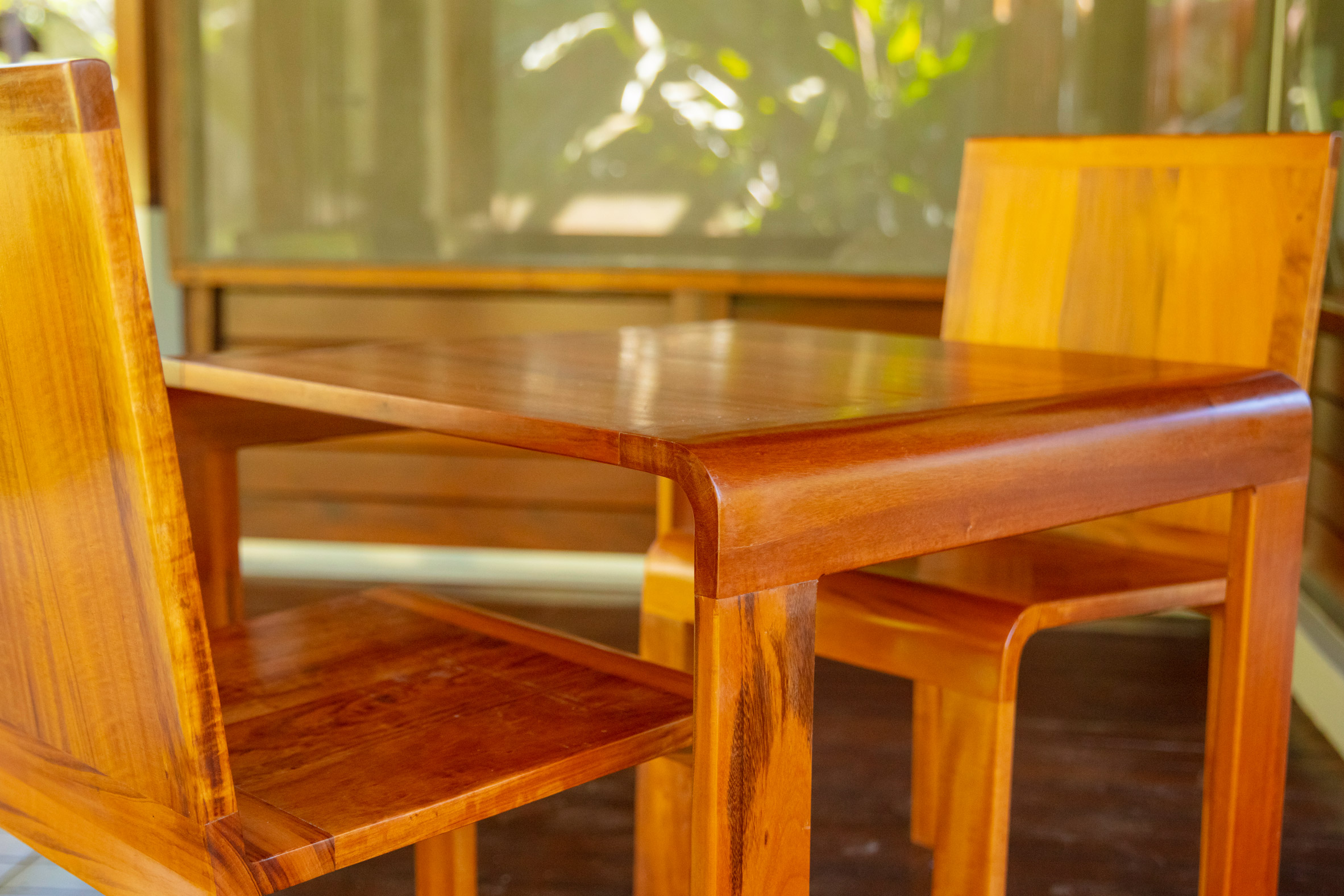
Other items created for the project include Roberta Rampazzo's Flow, a set of two chairs and a square table with curving edges made from muiracatiara wood.
Father and son duo Carlos and Diego Motta also used muiracatiara wood to create rounded bowls, and other homeware products including cutting boards, plates and stools. The material was harvested and constructed in collaboration with locals and then finished at the designers' workshop located in São Paulo.
BV Rio exhibited the works at the MADE an exhibition, which ran from 22 to 25 August 2019 as part of São Paulo Design Week.
Photography is courtesy of BV Rio.
The post Brazilian designers create homeware with Amazon communities for São Paulo design week appeared first on Dezeen.
https://ift.tt/2pD2smI
twitter.com/3novicesindia
No comments:
Post a Comment